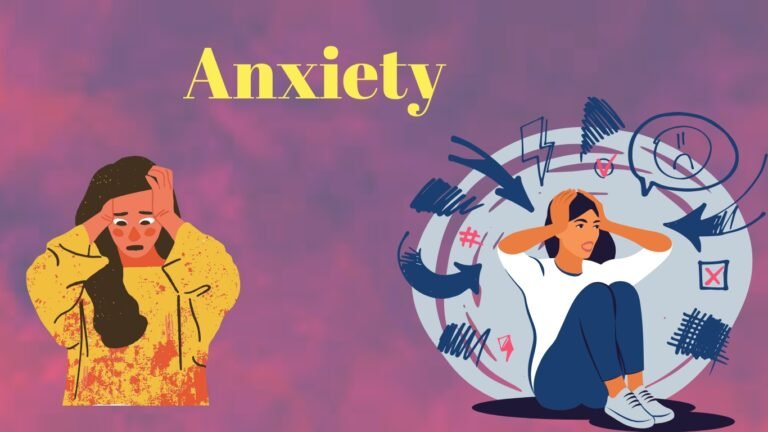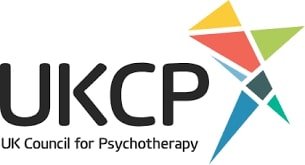
Anxiety Unveiled: Symptoms, Causes, and Treatments
Anxiety is a normal psychological reaction to stress, typically triggered by perceiving threats in the environment.
However, when anxiety becomes persistent or overwhelming and interferes with daily activities, it may indicate an anxiety disorder. Anxiety disorders are characterised by excessive, difficult-to-control worry, significantly affecting one’s quality of life (NIMH, 2022).
Common features of clinical anxiety disorders include:
Disproportionate worry about situations
Avoidance of daily activities such as hobbies, work, or social interactions
Physical symptoms, including increased heart rate, sleep disturbances, or chest discomfort (MedlinePlus, 2023)
This article offers an overview of anxiety, detailing its symptoms, causes, clinical subtypes, and practical strategies for effectively managing anxiety.
This article is for educational and informational purposes only. Please see full disclaimer below.
Why do we become anxious?
There are a number of factors, biological, environmental, and psychological, which can contribute to anxiety.
Biologically, anxiety can result from imbalances in neurotransmitters, especially gamma-aminobutyric acid (GABA). Deficiency in GABA or excess excitatory neurotransmitters such as glutamate, dopamine, or norepinephrine may cause or worsen anxiety (Harvard Health Publishing, 2022).
Environmental and social factors also play significant roles. Negative living or working environments, damaging relationship dynamics, insufficient social support, and prolonged isolation can trigger or intensify anxiety symptoms (ADAA, 2021).
Psychological factors, including traumatic life events (e.g., divorce or death of a loved one), negative thinking patterns, or low self-esteem, can also initiate or worsen anxiety (APA, 2021). Recognizing these factors helps customize effective treatment strategies.
Common Signs and Symptoms of Anxiety
Anxiety symptoms vary widely among individuals. Common indicators can include:
- Avoidance behaviors, aimed at preventing anxiety-provoking situations
- Sleep disturbances, such as restlessness or insomnia
- Physical symptoms, which can include:
- Chest tightness or heart palpitations
- Sweating, trembling, difficulty breathing
- Gastrointestinal issues, such as diarrhea, constipation, or nausea
- Panic attacks, characterised by intense anxiety episodes accompanied by physical discomfort; for example, chest pain or dizziness (MedlinePlus, 2023)
Clinical Subtypes of Anxiety
Anxiety is not a term for a single disorder; rather, it is an umbrella term which encompasses several clinical conditions. These include the following:
Social Anxiety Disorder (SAD): An intense fear of social judgment, causing severe anxiety in social, professional, or public-speaking contexts (Cleveland Clinic, 2022).
Generalized Anxiety Disorder (GAD): Persistent, excessive worry about everyday matters such as money, health, or work. The anxiety typically surpasses the actual threat level (NIMH, 2022).
Specific Phobias: Intense fears of specific situations or objects, such as enclosed spaces (claustrophobia), spiders (arachnophobia), or heights (acrophobia), often leading to avoidance behaviors that limit life experiences (ADAA, 2021).
Panic Disorder: Frequent, recurring panic attacks combined with persistent concerns about future episodes, leading to avoidance of potential triggers like social gatherings or workplaces (Cleveland Clinic, 2022).
Post-Traumatic Stress Disorder (PTSD): Although distinct in the DSM-5, PTSD shares anxiety-like symptoms, including flashbacks, hypervigilance, and nightmares, often overlapping with anxiety disorders (APA, 2021).
Strategies to Manage Anxiety
Anxiety is a treatable, manageable condition; people with the right tools and support can manage their anxiety, and there are multiple strategies which have clinical evidence for reducing anxiety symptoms, therefore improving life quality.
Here are a few of these strategies:
Psychotherapy: Counselling or psychotherapy provides safe environments to explore stressors and develop coping mechanisms. Cognitive-behavioral therapy (CBT) effectively helps identify and regulate harmful thought patterns (APA, 2021).
Desensitisation Therapy: Controlled exposure to anxiety-triggering stimuli gradually decreases their power to induce fear.
Medication: Pharmacological treatments, including antidepressants or anxiolytics, under medical supervision, can restore neurochemical balance, reducing anxiety symptoms (Harvard Health Publishing, 2022).
Support Groups: Engaging with support groups can offer comfort, reduce isolation, and promote coping strategies (ADAA, 2021).
Some medicines prescribed for anxiety, such as benzodiazepines, may have side effects such as dizziness, drowsiness and/or impaired coordination (MedlinePlus, 2023); if you do experience these side effects while taking these medications, you should not drive, operate machinery or perform other functions that demand your full attention until you are aware of the effect the medicine has on you (ibid. 2023).
Always check with your doctor for potential side effects of medicines prescribed, such as antidepressants and/or any changes you may need to make in your lifestyle.
Lifestyle Adjustments For Managing Anxiety
Making appropriate lifestyle adjustments to reduce anxiety can help you to establish an overall sense of wellbeing, alongside prioritising self-care in your daily routine.
The following lifestyle changes can be of benefit:
- A balanced diet consisting of the three macronutrients (carbohydrates, proteins, and fats) is essential for both physical and mental health. Nuts and fish are rich in omega-3 fatty acids, which help brain function.
- Mindfulness-based therapy encourages us to live in the present, reducing fear and overthinking. Mindfulness-based practices such as yoga, meditation and grounding exercises put people in the here and now, reducing anxiety (Harvard Health Publishing, 2022); breathing techniques, such as deep, slow breathing, can help calm the body when anxiety gets out of hand.
- Engaging in regular exercise (such as moderate cardio and weight/resistance training) promotes physical and psychological wellbeing; exercise releases endorphins that elevate mood and reduce anxiety (Cleveland Clinic, 2022).
- Alcohol and caffeine can aggravate anxiety symptoms (MedlinePlus, 2023); limiting alcohol and/or caffeine intake is recommended to reduce the occurrence of anxiety episodes.
Moreover, alcohol can cause adverse effects in its interactions with prescribed anti-anxiety drugs (e.g. antidepressants and/or anxiolytics). Drinking while being prescribed an antianxiety drug can lead to to potentially life-threatening adverse effects such as respiratory depression (profoundly slowed breathing), unconsciousness (including blackouts/comas) and memory loss.
It is generally advisable to avoid drinking alcohol when taking prescribed anti-anxiety drugs, due to these potentially deadly interactions.
Anxiety is a common, yet treatable, psychological condition, and you can overcome your anxiety through managing your symptoms via lifestyle changes, counselling/psychotherapy and medical support from qualified doctors and mental health professionals.
Conclusion:
In a nutshell, anxiety is a complex, although common, condition that has a number of different biological, environmental and psychological causes. Feeling anxious is a normal human response, but when anxiety is persistent or overwhelming, it can signal an underlying disorder that affects quality of life. As outlined above, awareness of the signs, knowledge of the clinical subtypes, and the use of a number of impact-reducing management techniques, from therapist-mediated interventions like CBT, to lifestyle, may play a critical role in reducing anxiety symptoms and improving general health and wellbeing (Harvard Health Publishing, 2022; NIMH, 2022). This piece serves as a reminder that the right support and treatment can go a long way in helping manage anxiety and help improve the quality of life significantly.
FAQ:
Q1: What distinguishes normal anxiety from an anxiety disorder?
A: Normal anxiety is a common response to stress or perceived threats, while an anxiety disorder involves constant or overpowering anxiety that disrupts daily activities and quality of life (MedlinePlus, 2023).
Q2: What are some common physical signs of anxiety?
A: Physical signs can include an elevated heart rate, chest discomfort, restlessness, insomnia, sweating, trembling, and digestive issues such as nausea or diarrhea (Harvard Health Publishing, 2022).
Q3: How do environmental factors contribute to anxiety?
A: Environmental factors such as stressful living or working conditions, damaging relationship dynamics, and lack of social support can all play a significant role in triggering or exacerbating anxiety symptoms (ADAA, 2021).
Q4: What are some common therapeutic approaches for managing anxiety?
A: As mentioned above, there are several therapeutic approaches and strategies for managing anxiety, including cognitive behavioural therapy (CBT), desensitisation techniques, counselling, and, where necessary, pharmacological treatments like antidepressants or anxiolytics (APA, 2021).
Q5: Can lifestyle changes really help manage anxiety?
A: Yes. Adopting a balanced diet, regular exercise, mindfulness practices, proper breathing techniques, and limiting alcohol and caffeine intake can all contribute to reducing anxiety symptoms and promoting overall mental wellbeing (Cleveland Clinic, 2022).
References:
American Psychological Association [APA] (2021) Anxiety. American Psychological Association. Available at: Anxiety. (Accessed: 14/02/2025)
Anxiety and Depression Association of America [ADAA] (2021) Understanding Anxiety Disorders. Anxiety and Depression Association of America. Available at: Understanding Anxiety Disorders. (Accessed: 14/02/2025).
Cleveland Clinic (2022) Anxiety Disorders. Cleveland Clinic. Available at: Anxiety Disorders. (Accessed: 14/02/2025).
Harvard Health Publishing (2022) What causes anxiety? Harvard Health Publishing. Available at: What causes anxiety? (Accessed: 14/02/2025).
MedlinePlus (2023) Anxiety Disorders. MedlinePlus. Available at: Anxiety disorders. (Accessed: 14/02/2025).
National Institute of Mental Health [NIMH] (2022) Anxiety Disorders. National Institute of Mental Health. Available at: Anxiety disorders. (Accessed: 14/02/2025).
Disclaimer: The author, Sabbir Ahmed, is a registered psychotherapist (UKCP Reg: 2011164676). Sabbir has written this article for informational and educational purposes only, and referenced relevant sources when writing this article.
Reading this article, in and of itself, does not create a therapist–client relationship.
All content is provided on an “as is” basis; no guarantees are made as to its accuracy or completeness.
The information contained on Kind Soul Psych is for general information purposes only and does not purport to be, or constitute, medical and/or legal advice.




All Rights Reserved.

